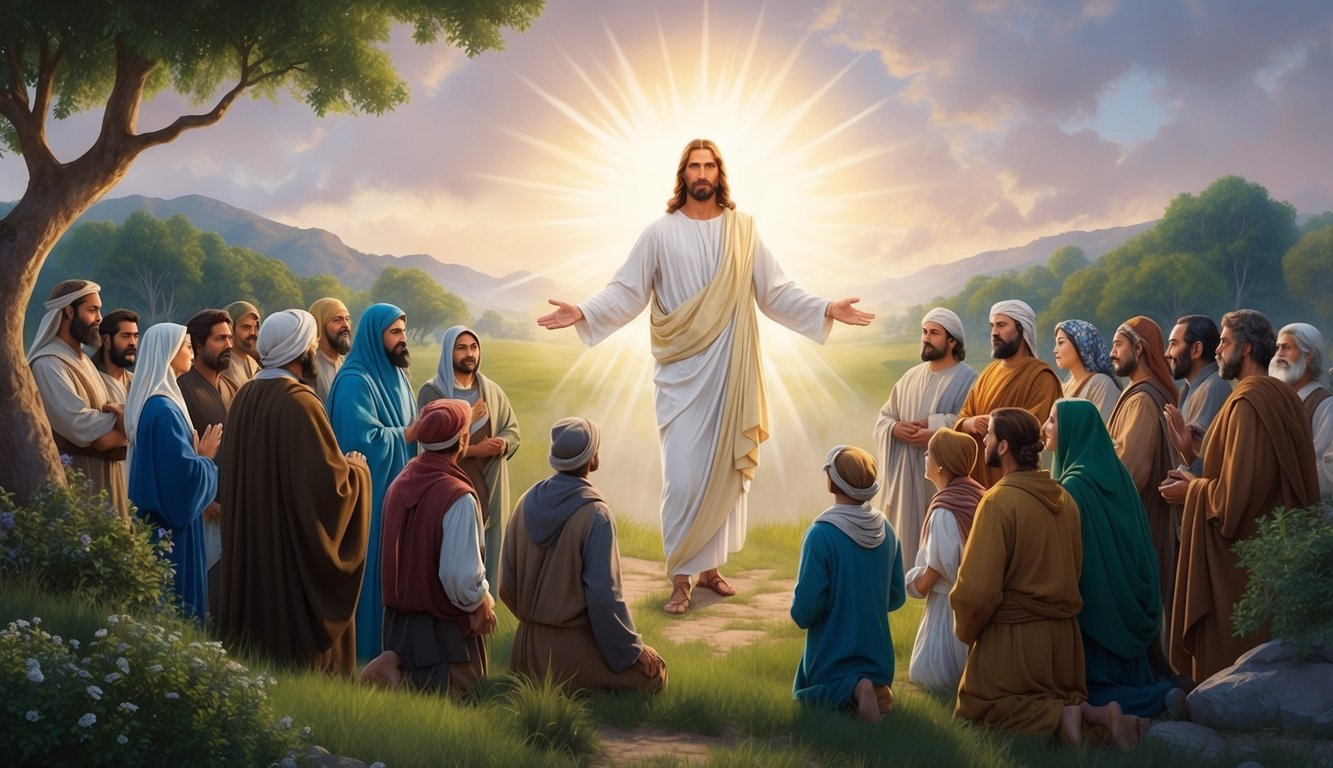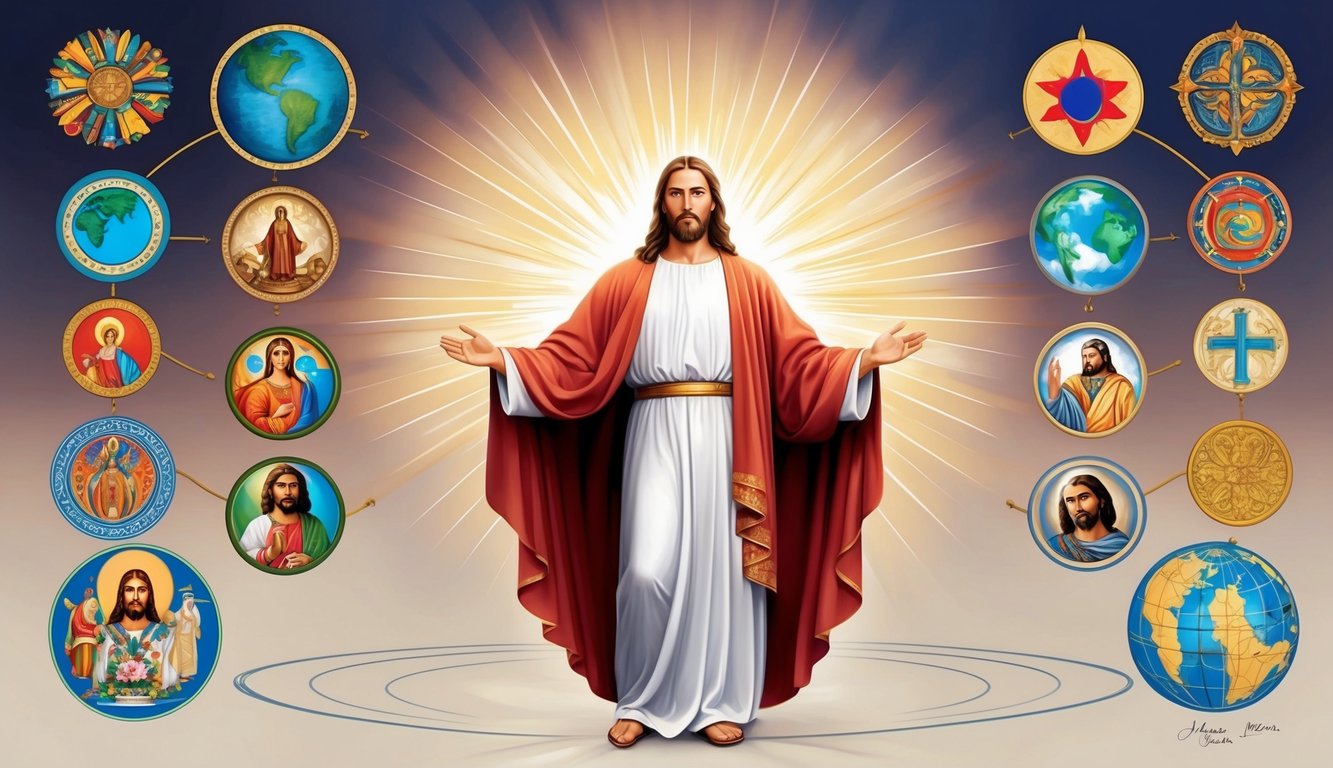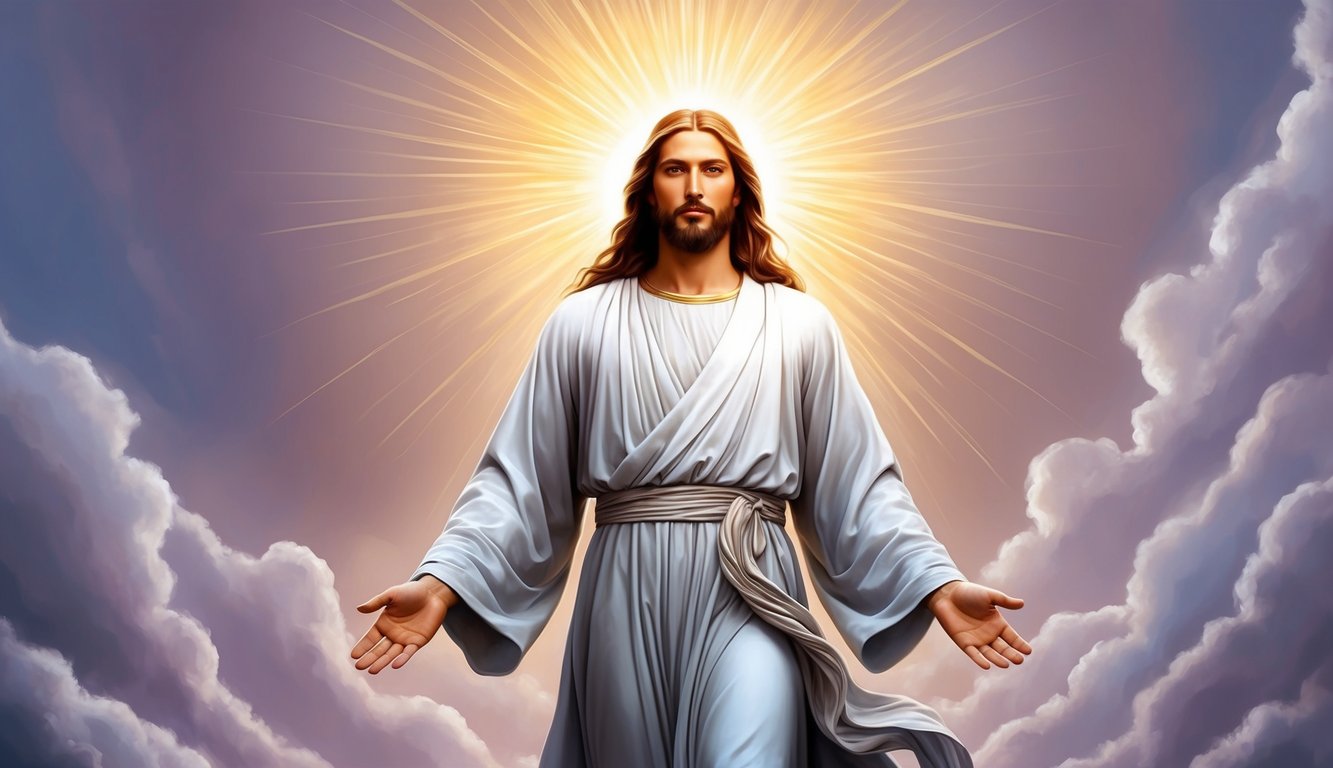Don’t Miss Out On This Unique Astrological Opportunity
Are you tired of spinning your wheels and getting nowhere? Simply put, you’re out of sync: you’re out of alignment with your astral configuration.
But: there’s a kind of map that can help you reclaim your alignment. Think of it as your own personal blueprint to success and happiness: a blueprint that will help you live your most amazing life.
Get started here.
When you dive into the Bible, it’s easy to see why many people are curious about how Jesus Christ’s appearance is described.
The Bible doesn’t give a clear, detailed account of His looks, leaving much to the imagination.
You won’t find an exact description of His features or height.
Instead, the Bible often focuses more on His divine presence and character rather than His physical description.
In some parts, like in the book of Isaiah, Jesus is depicted as having no special beauty or majesty that would draw attention.
This suggests that His appearance was ordinary, allowing His teachings and actions to be the main focus.
The New Testament emphasizes His humility and the profound impact He had on those around Him.
Even though specific details on His physical appearance are sparse, the descriptions that do exist highlight the perception of Jesus through His powerful deeds and spirituality.
This gives you a glimpse into why His life and message have captivated people over centuries, sparking imagination and devotion worldwide.
Biblical Descriptions of Jesus
The Bible provides various depictions of Jesus Christ’s appearance.
Different parts focus on specific aspects, offering diverse perspectives about His look and presence.
Representation of Jesus in the Gospels
The Gospels, including those of Matthew and John, don’t offer many details about Jesus’ physical appearance.
They focus more on His actions and teachings.
While traditional images show Jesus as a Jewish man with long hair and a beard, the Bible itself doesn’t describe these features explicitly.
Instead, you might find references to Him being the “Son of Man” and the “Son of God”, emphasizing His connection to humanity and divinity, rather than specific facial features or attire.
Prophetic Insights from Isaiah
Isaiah, a book in the Old Testament, includes intriguing predictions that Christians believe refer to Jesus.
The prophet speaks of a figure who has “no beauty” in Isaiah 53:2, suggesting that Jesus was not distinguished by striking looks.
This points to a humble appearance, allowing focus on His spiritual message instead.
These descriptions underline the belief in Jesus as a relatable figure, more about humility and sacrifice rather than physical attributes.
Transfiguration and Resurrection Accounts
Events like the Transfiguration and Resurrection add layers to how Jesus is portrayed.
During the Transfiguration, described in Matthew 17, Jesus’ face shines like the sun, and His clothes become dazzling.
This moment highlights His divine nature.
After the Resurrection, accounts in the New Testament describe encounters with a resurrected Jesus.
Sometimes, His disciples initially don’t recognize Him, which hints at a transformed appearance.
These events reinforce His identity beyond physical traits, focusing on His role as a spiritual guide and Savior.
Physical Appearance of Jesus
When imagining Jesus, you might think of various images based on artistic interpretations or descriptions from scripture.
These depictions influence how you perceive his physical traits.
Contemporary Accounts and Artistic Interpretations
Many artworks show Jesus as a figure with long hair and a beard.
These portraits, often featuring a solemn expression, present Jesus with varying skin tones, height, and European features like brown eyes or sometimes light-colored eyes.
One well-known mysterious artifact, the Shroud of Turin, adds to the intrigue.
This cloth is thought by some to bear the image of Jesus, showing a man with distinctive facial features and long hair.
However, it’s important to realize that these artistic and cultural depictions are interpretations and not historical facts.
Characteristics Described in Scripture
In the Bible, there are not many direct descriptions of Jesus’s appearance.
The scriptures focus more on his actions and teachings than his looks.
Isaiah 53:2 suggests that Jesus had “no beauty” or majesty to attract people.
This implies he may have appeared as an ordinary man, not imposing.
The absence of detailed physical traits leaves many guessing about his hair color, whether it was dark, akin to common traits in the region like black or dark brown hair.
The scriptures don’t describe specific attributes like eye color or skin tone, leaving interpretations open and varied, often shaped by cultural context and later narrative enhancements.
Cultural and Historical Context

Understanding the cultural and historical context of Jesus Christ is important when considering how his appearance is described in religious texts.
This involves looking at the typical features of a first-century Jewish man and how Jesus has been represented in art throughout history.
Jesus as a First-Century Jewish Man
In the time of Jesus, Jewish men typically lived in areas like Galilee and Judea.
They often had traits common to Middle Eastern people, such as dark hair, brown eyes, and olive skin.
Jesus’ humble beginnings in Nazareth and travels to places like Jerusalem suggest he wore simple clothing, like a tunic, and possibly a shawl.
Joan Taylor, an expert in this area, highlights that Jesus likely shared physical characteristics with other Jewish people of his era.
He might have also worn sandals typical of the time.
While the Bible does not provide a detailed description, these cultural clues help form a picture of Jesus’ likely appearance.
Representation in Christian Art and Archaeology
As Christianity spread across the Roman Empire, different images of Jesus appeared in art.
In the early days, like in the Roman catacombs, Jesus was often shown as a youthful figure with no beard, influenced by Roman styles.
These images started in places such as Palestine and later reached places like Egypt and Rome.
Biblical Archaeology Review has explored how these artistic representations evolved.
Over time, bearded depictions became popular, aligning with the “Son of Man” image and Second Temple Judaism traditions.
As Christianity continued to develop, the portrayal of Jesus adapted to fit various cultures, reflecting not only his role as the “Son of God” but also his Jewish heritage and Middle Eastern roots.
Symbolism and Theological Understanding

In exploring how the Bible describes Jesus Christ’s appearance, it’s essential to focus on symbolic elements and their theological implications.
This will help you understand the deeper meanings behind the descriptions and what they signify for followers of the Christian faith.
The Metaphorical Language of Biblical Imagery
The Bible often uses symbolic language to describe Jesus, highlighting his spiritual significance rather than physical traits.
One prominent metaphor is Jesus as the “Lamb of God.” This image represents purity and sacrifice, tying into the idea of Jesus’s role in salvation.
Another example is the “Suffering Servant” in Isaiah, a figure foretold to endure suffering for the sins of others.
Christians see this as a symbol of Jesus’s sacrificial love and devotion to humanity.
These symbols help followers connect with Jesus beyond physical descriptions, emphasizing his divine mission.
This prophetic imagery reinforces the belief that Jesus’s purpose was to bring redemption through selfless sacrifice.
By focusing on his actions and teachings rather than physical traits, believers are encouraged to embody his compassion and humility.
This aligns with matthew 6:2 meaning, which warns against performing righteous deeds for public recognition, emphasizing sincerity in faith and service.
Christological Implications of Jesus’s Appearance
The New Testament focuses more on Jesus’s teachings and divine nature than his appearance.
Descriptions are often brief or absent, perhaps to encourage believers to see Jesus as the Son of God, beyond earthly attributes.
This aligns with Christian doctrine, which stresses faith in his spiritual presence and teachings.
The simplicity of Jesus’s portrayal emphasizes his accessibility to all — children, disciples, and followers alike.
By focusing on his message rather than appearance, Christians learn to prioritize faith and spiritual understanding.
This approach underlines the importance of Jesus’s divine nature, his role as a teacher, and the guiding light for believers’ lives.
Influence and Depictions of Jesus Across Cultures

The image of Jesus has been depicted in many ways across different cultures.
These depictions are often shaped by cultural, historical, and religious contexts, making them diverse and unique.
You will see how the image of Jesus has been adapted and continues to hold relevance in today’s world.
Adaptation of Jesus’s Image in Global Christianity
In Christian art, images of Jesus often reflect the culture of the people creating them.
For example, the Good Shepherd is a common symbol showing Jesus as a caring guide.
Across cultures, you might notice that Jesus’s appearance changes to match local features, making him more relatable to diverse populations.
For example, in African cultures, Jesus may be depicted with dark skin, while in Western cultures, he often has European features.
These adaptations help believers connect with their faith in a more personal way.
The halo and heart of Christ are universal symbols, often used in religious artworks to express divinity and love.
Contemporary Relevance and Representations
Today, Jesus’s depictions continue to evolve.
Modern representations often focus on universal themes such as compassion and peace.
The use of symbols like the fish, once a secret Christian emblem, remains significant as a sign of faith.
Contemporary artists and media frequently revisit and reinterpret these images for a new generation.
Institutions like King’s College London may explore these evolving depictions academically.
Newspapers like the Irish Times sometimes discuss the cultural impact of these images.
Themes featuring Jesus’s disciples, such as Peter and James, and figures like John the Baptist and Jude, are popular topics in discussions of Christian iconography.



